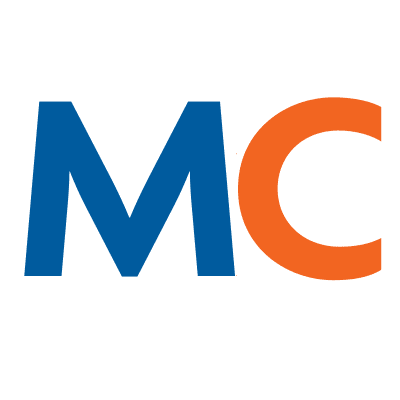- Solutions
- Solutions
- Home Health
- Hospice
- Life Plan Community
- Palliative Care
- Private Duty
- Senior Living
- Skilled Nursing
- Skilled Nursing
- Skilled Nursing Software
- Advanced Insights
- Customer relationship management
- Data and analytics
- Financial & operations management
- Marketing
- Nutrition management
- Referral management
- Regulatory compliance
- Retail management
- Resident engagement
- Revenue cycle management
- Skilled nursing interoperability
- Partners
- Blogs
- Resources
- About
- User Conference

Why smart agencies prioritize quality (and why you should)
Quality is more than a requirement, it’s a currency.
For home health and hospice agencies, investing in quality goes beyond compliance. It can protect revenue, reduce denials, and unlock financial stability through smarter care.
To thrive under evolving healthcare regulations and value-based care models, agencies must reframe how they view quality. Instead of seeing it as a regulatory burden, successful organizations treat it like financial capital. In this blog, we explore how rethinking quality can deliver serious ROI.
Reframing quality as currency
Think of quality the same way you think of money. It’s a medium of exchange that determines what you get in return. When managed wisely, quality can translate into:
- Improved healthcare reimbursement
- Fewer denials
- Incentives under value-based purchasing
- Stronger operations
This mental shift turns quality into a strategic asset. And like anything of value, it requires structured oversight, robust systems, and constant reinvestment.
Why quality matters more than ever
Healthcare regulations continue to tie reimbursement directly to clinical and operational performance. For agencies delivering hospice care at home or home health services, this means success hinges on more than just good intentions. It hinges on measurable outcomes.
Quality impacts every area of your agency:
- Clinical outcomes influence public ratings, referrals, and incentive payments
- Coding accuracy affects episodic payments
- QAPI programs drive compliance and improvement
Smart agencies know: Quality isn’t a box to check. It’s a lever to pull.
Building a high-performing QAPI program
Agencies that succeed under today’s healthcare reimbursement solutions often have one thing in common: a mature, data-driven QAPI program.
A strong Quality Assurance and Performance Improvement (QAPI) program doesn’t sit on the sidelines. It integrates into every part of the organization, from intake to discharge and beyond.
Here are the five essential phases of a modern QAPI program:
- Discovery: Gather data from all sources, including CMS reports, internal audits, scrubber reports, and chart reviews.
- Assessment: Analyze the data to identify issues. Focus on benchmarks like timely initiation of care or hospitalization rates.
- Improvement planning: Prioritize focus areas. Create realistic goals and map out interventions.
- Implementation: Educate staff, revise workflows, and deploy tools to improve performance.
- Ongoing evaluation: Review outcomes continuously. Adapt and refine your strategy in real time.
This cycle never stops. Just like your revenue stream, your QAPI strategy should be in constant motion.

Optimizing reimbursement through quality
Top agencies manage quality like a central bank manages currency. They adjust their internal “monetary policies” to maximize episodic reimbursement and reduce risk.
Here’s how they do it:
- Coding accuracy is critical
The foundation of strong reimbursement starts with proper diagnosis coding. Agencies must:
- Select the correct PDGM grouper based on the true focus of care.
- Capture all comorbidities to qualify for appropriate adjustments.
- Avoid common coding errors that lead to hundreds (or thousands) of dollars in lost revenue per episode.
- OASIS financial responses drive revenue
OASIS isn’t just a clinical tool, it’s a financial one. Agencies should pay close attention to:
- M1033: Risk for hospitalization.
- M1800-M1860: Functional scoring items that define the patient’s care needs.
- Discrepancies between therapist notes and selected responses can cost agencies hundreds of dollars per episode.
An inaccurate OASIS response, especially at start of care, can derail an entire episode’s reimbursement. Under value-based care models, the ripple effects multiply.
Reducing denials and audit risk
Every dollar counts. Agencies need systems that catch mistakes before they lead to denied claims or audit takebacks.
The most common denial reasons include:
- Incomplete face-to-face documentation
- Missing plans of care
- Insufficient documentation of skilled need
- Late responses to additional documentation requests
- Homebound status not clearly supported
These are preventable losses. Regular chart audits, staff education, and proactive compliance measures reduce these risks dramatically.
Strengthening incentives under value-based purchasing
The value-based care model is reshaping how agencies are paid. Under value-based purchasing (VBP), your quality performance directly influences your bottom line.
Agencies must now optimize three core areas:
- Claims data: Metrics like preventable hospitalizations and discharge to community status influence 35–50% of your VBP score.
- Patient satisfaction: Survey results affect 30% of the VBP score for larger agencies.
- OASIS outcomes: GG discharge scores, dyspnea management, and oral medication adherence carry significant weight.
Missing the mark on any one area can lead to penalties or lost incentives. But with the right quality oversight, agencies can turn these levers into a performance advantage.
Compliance and operational excellence
High-performing agencies don’t leave quality to chance. They embed it into every layer of operations, from intake to post-discharge monitoring.
Here are some best practices to consider:
- Stay up to date on regulations in healthcare including the CMS Conditions of Participation (COPs), especially Section 484.65.
- Certify coders and QA staff, and keep them educated on the latest quality metrics and coding best practices to maximize reimbursements.
- Implement strong internal policies that promote compliance and cash flow.
- Keep current with quarterly OASIS Q&As and biannual ICD-10 code changes.
- Use audit tools or third-party services to identify risk and track progress.
In the end, quality is more than meeting CMS expectations. It’s future-proofing your agency against payor changes, workforce pressures, and competitive threats.
Quality measures as competitive advantage
Publicly reported quality measures in healthcare influence how referral sources, payors, and patients perceive your agency. In many cases, they influence who chooses you.
Key measures to monitor include:
- Improvement in walking, bathing, medication management, and breathing
- Timely initiation of care
- Acute care hospitalization rates
- Discharge functional scores
The best agencies treat these KPIs like revenue generators. They embed tracking systems into daily workflows, educate staff on expectations, and act quickly when trends shift.
When quality becomes part of your culture, success follows.
Build your strategy around quality
Top-performing home health and hospice agencies know that quality is not optional, it’s foundational. The agencies that rise to the top are those that treat quality like money.
They understand that every OASIS answer, diagnosis code, and care plan decision has financial implications. They’ve built cultures where quality drives decision-making, not just compliance.
They don’t wait for audits or penalties to get serious about QAPI. They operate with the mindset that every investment in quality yields dividends in financial health, staff confidence, and patient satisfaction.
And when they need help, they choose partners who understand the full picture.
Choose quality-driven technology
At MatrixCare, we’ve worked alongside thousands of home health and hospice agencies to deliver smarter, quality-focused care. Our deep expertise in coding, OASIS, and QAPI enables us to help agencies:
- Optimize healthcare finance through improved reimbursement
- Reduce denials with accurate documentation and coding oversight
- Strengthen audit readiness and regulatory compliance
- Maximize value under the value-based care model
We don’t just offer software, we offer strategy. One built around quality as your greatest asset.
Ready to elevate performance, protect revenue, and deliver lasting results? We’re here to help.
Request a demo today for a closer look at MatrixCare.
Trish Weber
Early in her career as a registered nurse, Trish realized that her true passion is with the senior population. Consequently, she has dedicated the majority of her 30-year nursing career to long-term care (LTC) and home health settings. Here she has acquired invaluable insights from the perspective of a field clinician and has also contributed significantly to overseeing the Quality Assessment and Performance Improvement (QAPI) program.
She possesses extensive expertise in ICD-10 coding and the OASIS instrument, holding certifications in both specialties. This comprehensive knowledge and skill set inform her contributions to the coding department, where she strives to foster continuous growth for the team and its services. By working collaboratively, Trish aims to deliver the highest quality product to enable agencies to shine and receive the full reimbursement they deserve.
Related Posts


See MatrixCare in action
Start by having a call with one of our experts to see our platform in action.
MatrixCare offers industry-leading software solutions. Thousands of facility-based and home-based care organizations trust us to help them improve efficiency and provide exceptional care.
© 2025 MatrixCare is a registered trademark of MatrixCare. All rights reserved.





